SYRUP MAKIN' TIME
BY RICKEY ROBERTSON
In the Old Testament Book of Ecclesiastes wise king Solomon writes that there is a purpose for all things and that there is a time to plant and a time to pluck what you have planted. We have many traditions that we continue to use out in the country that pertains to our crops and of gathering and preserving them. And when the first frost falls we know it is "hog killin' time," time to go and start smoking fresh meat in the smoke house, and also time for "syrup makin'!"
So many of our traditions have been lost over the years. Things that we did when we were kids have now been lost. But Rayford West continues a tradition of making syrup just as his Grandfather and his Father and at the same location they made syrup many, many years ago. And at the age of 89 he can say he has seen many gallons of cane syrup made at the family syrup mill. Rayford and his family live in northern Vernon Parish in what is known as the Silver Creek Community. He is one of a very few people in Louisiana who's birth certificate states that he was born at Indian Creek, Louisiana.
The site of the syrup mill is on Silver Creek Church Road and it at one time was the location for the Indian Creek School. The mill site was picked by Rayford's grandfather, Mat West due to the fresh spring water flowing and bubbling out of the ground. Water was needed while the syrup was being made for various things, but most of all, the 2 horses used to turn the syrup grinder had to be watered. And if you had to carry water any distance it became a tough chore! Mat had homesteaded 160 acres and as part of his crop, that included corn, cotton, peas and beans, he also planted some sugar cane. In 1897 Mat and his son Willie (Rayford's father) travelled to Leesville, La. to pick up a syrup mill he had ordered. The mill came in on the train and Mat and Willie picked it up and brought it home in a wagon. The West Family began making syrup in 1897 with this syrup mill and it was used until around 1945. With all the men off in the service during World War II the mill sat quietly waiting to be used again. In 1965 the West Family, their neighbors, and even the members of Silver Creek Baptist Church voted to begin making syrup again. Now everyone in that area would be a part of the syrup making! Folks, the best way to describe this is "team work!"
Since 1954 the only year syrup was not made was 1984. That year Willie West, Rayford's father, passed away but something also took place with the crop of sugar cane. In 1984 due to freezing weather the cane crop froze. The freezing weather killed the cane crop back and the folks had to restart their cane crops. Today, Rayford continues to raise sugar cane along with his friend and neighbor from Leesville, La. Arthur Ward. This year they had 3 sixteen foot flat-bed trailers mounded over filled with sugar cane. It was a mixture of various types of sugar cane such as CO2-90, Mexican cane, and as Rayford describes it "old time family cane". To get these trailer loads of sugar cane they go into the cane filed with a machete and they cut and strip the cane, then it is loaded on the trailer. Each trailer load of sugar cane will render out 2 barrels of sweet cane juice totaling 110 gallons. The cane is ground in a newer Chattanooga syrup mill (the old mill is still sitting in its original place ready for use if needed) and it squeezes out the sweet tasting cane juice. And it sure is good when you get a cup of that juice and drink it down! The large cooking vat holds 110 gallons of cane juice and this juice must cook for 7 hours after it begins to boil. The longer you boil the cane the thicker it will get. Out of 110 gallons of cane juice it will make 18 to 22 gallons of fine cane syrup . Long hard hours of work by everyone, from the kids to the adults, makes it a great success each year!
Tradition also involves Silver Creek Baptist Church. On Wednesday evening November 22, the congregation gathered at the syrup mill site and they held their Prayer Meeting. They gathered to worship, to pray, and to give thanks for the blessing of the good crop and of the many blessings the Lord had given them this year. And at 5 a.m. the next morning, the work began. And at dinner time 60 to 70 people celebrated Thanksgiving Dinner right at the mill site while syrup was being make. And as I looked at all the syrup being rendered out, I could tell everyone the Lord had given them the increase through his blessings! As my wife and I watched the syrup making and visited with Rayford and everyone there I saw something many people might overlook. I saw the America I grew up with still in existence at this syrup making where everyone, big or little, young or old, friend or stranger, working together and they all enjoyed working together. And Rayford and Arthur Ward had a contest to see who had grown the largest stalk of sugar cane. And the winner was Arthur's 10 feet 2 inch stalk. And guess what, right where all the tall stalks of cane were standing there was the American Flag, our flag, flying over this syrup making. America, this is our history and our tradition being kept by Rayford West and his family and neighbors. There were many people who brought their children and grandchildren to watch all the syrup making process and to get a good drink of sweet cane juice. They saw something they will never forget, and none of us need to forget this piece of history that is still being kept up year by year. If you haven't ever been to a syrup making, Rayford would sure be tickled if you would come during the syrup making. And when you meet Rayford you will find a fine man, a story teller, who will gladly share the stories of the area, but most of all, the story of the tradition of making fine cane syrup by his family at this site.
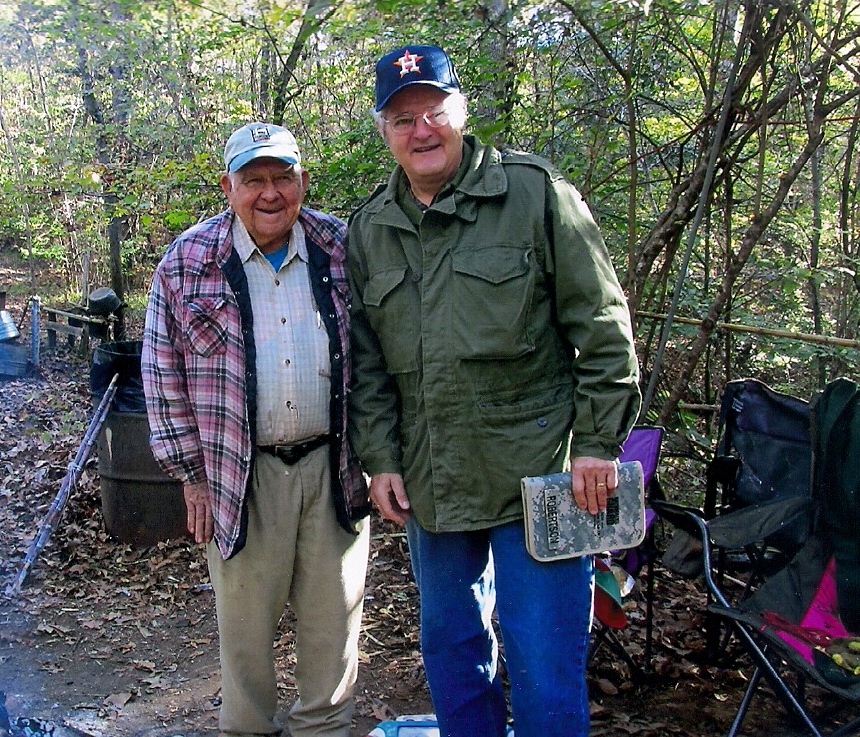
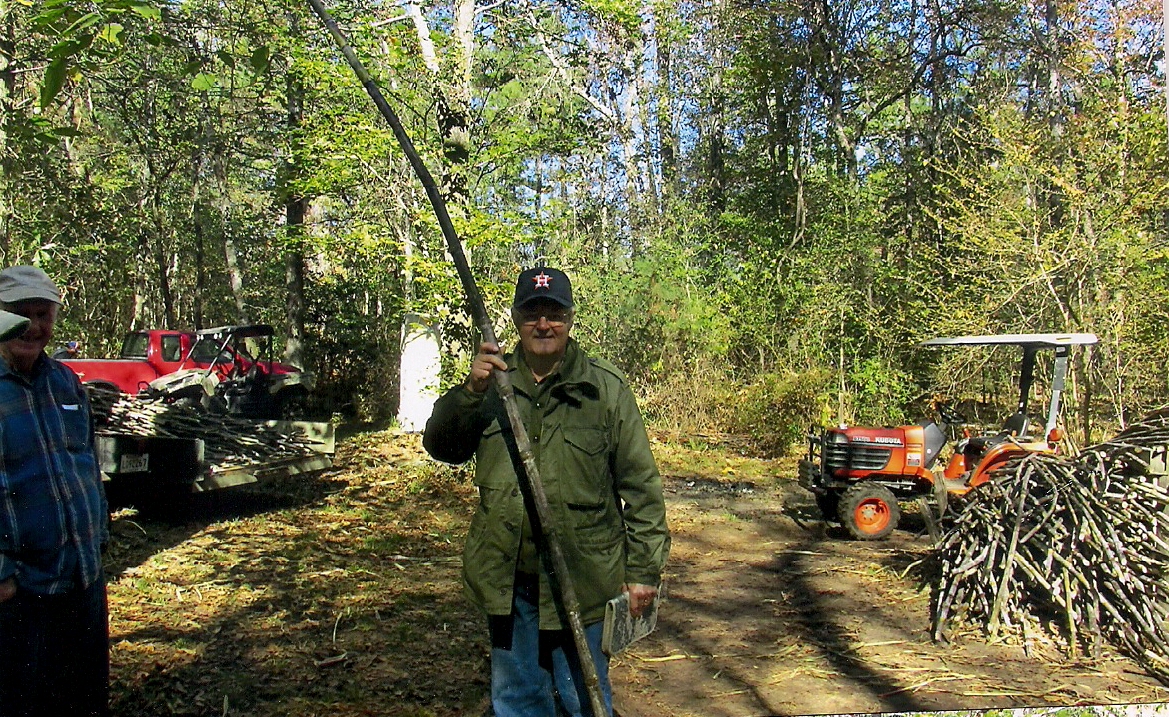
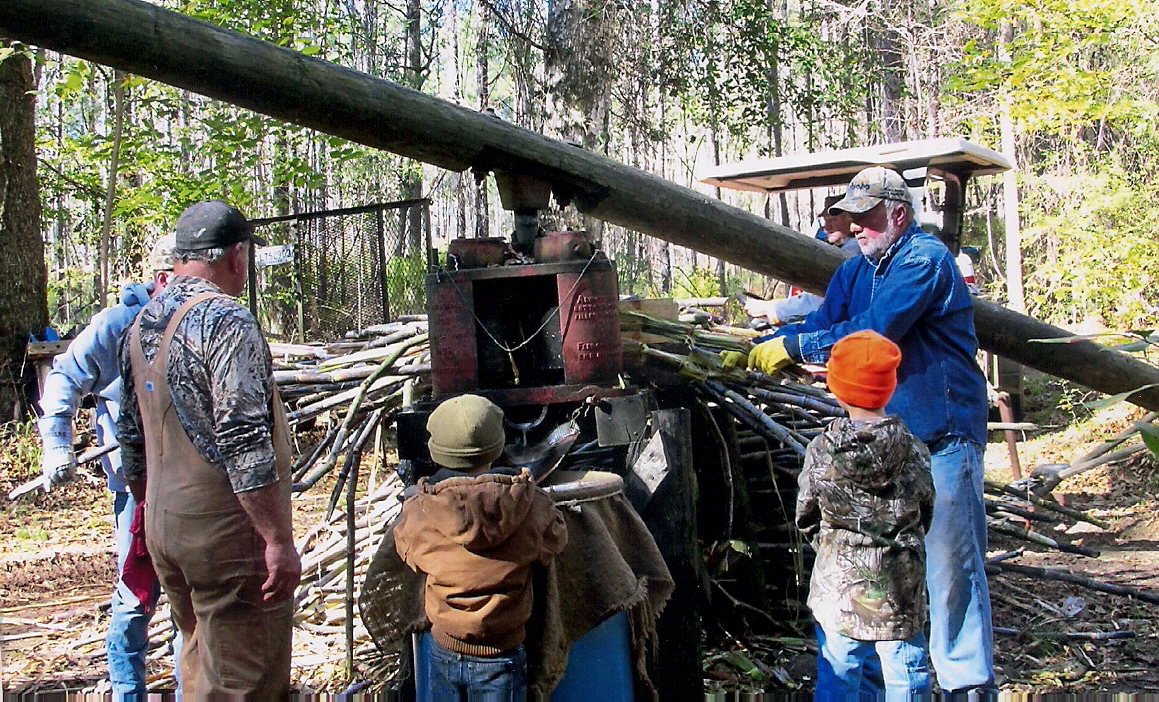
Everyone has a job at the syrup making from the children to the adults. The adults are feeding the sugar cane into the mill and the children are screening the cane juice. (Robertson Collection)
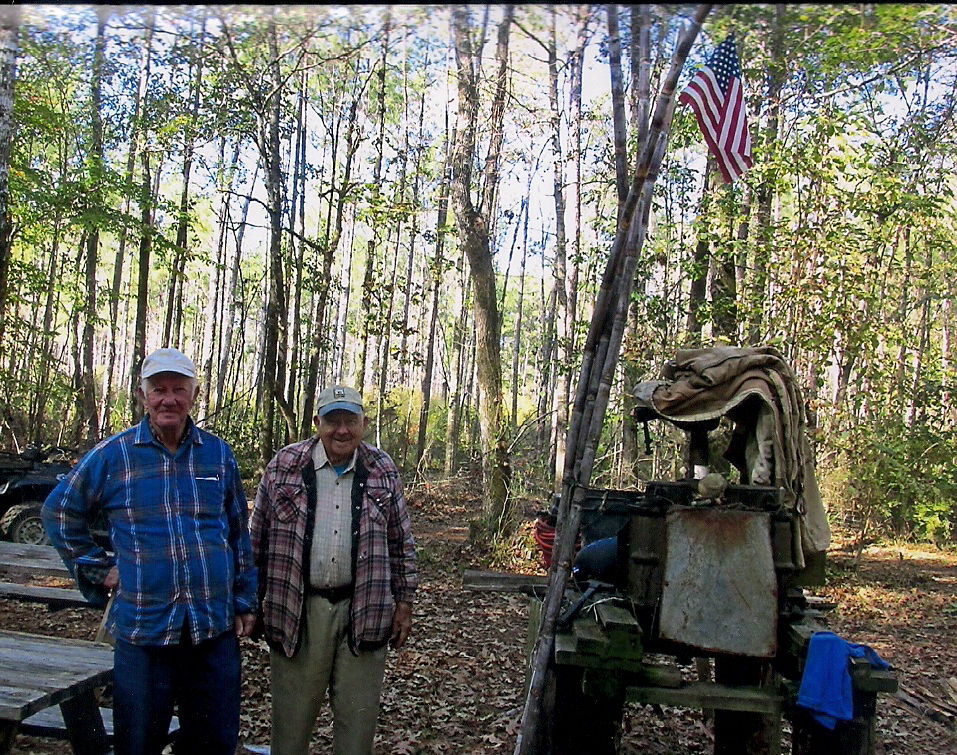
Arthur Ward and Rayford West are sugar cane growers in Vernon Parish, La. (Robertson Collection)
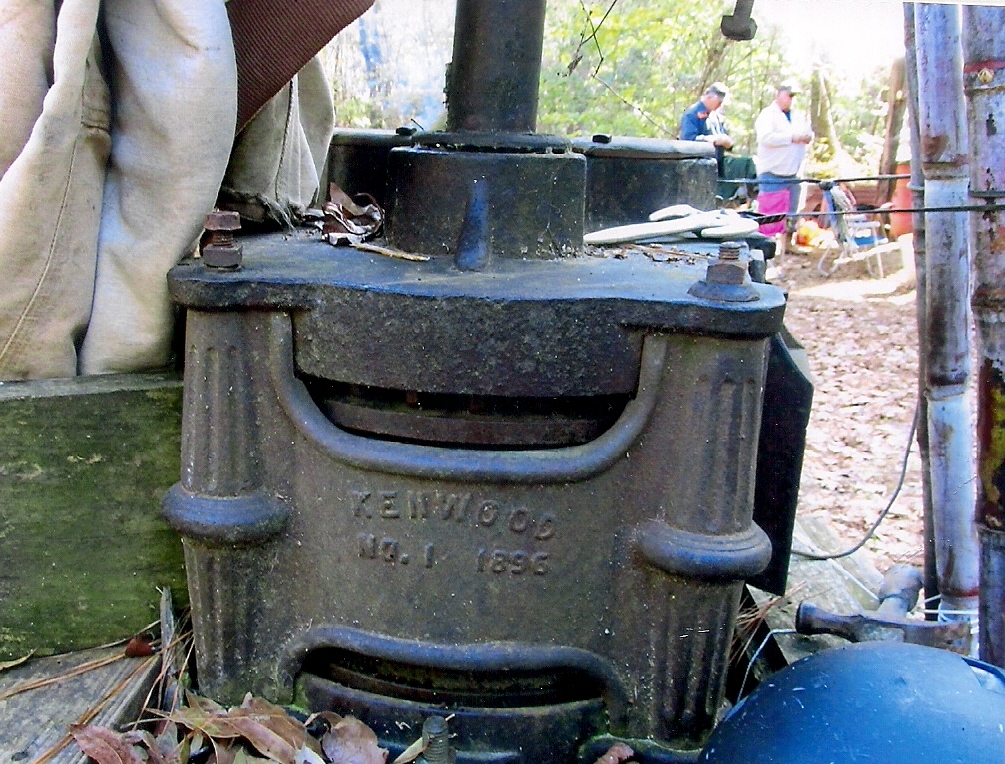
The original cane mill purchased by Mat West in 1897 is still at the original location and is still ready to be used ! (Robertson Collection)
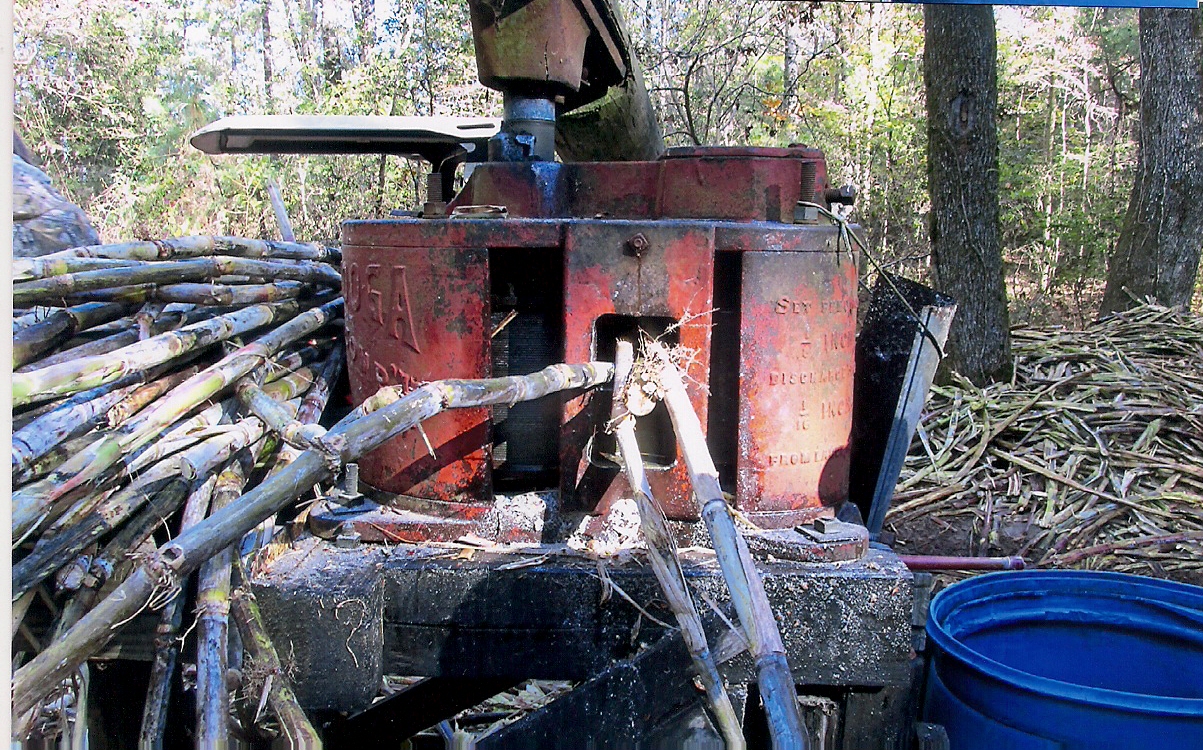
The current syrup mill that has been used for the last 20 years was manufactured by Chattanooga Company. (Robertson Collection)
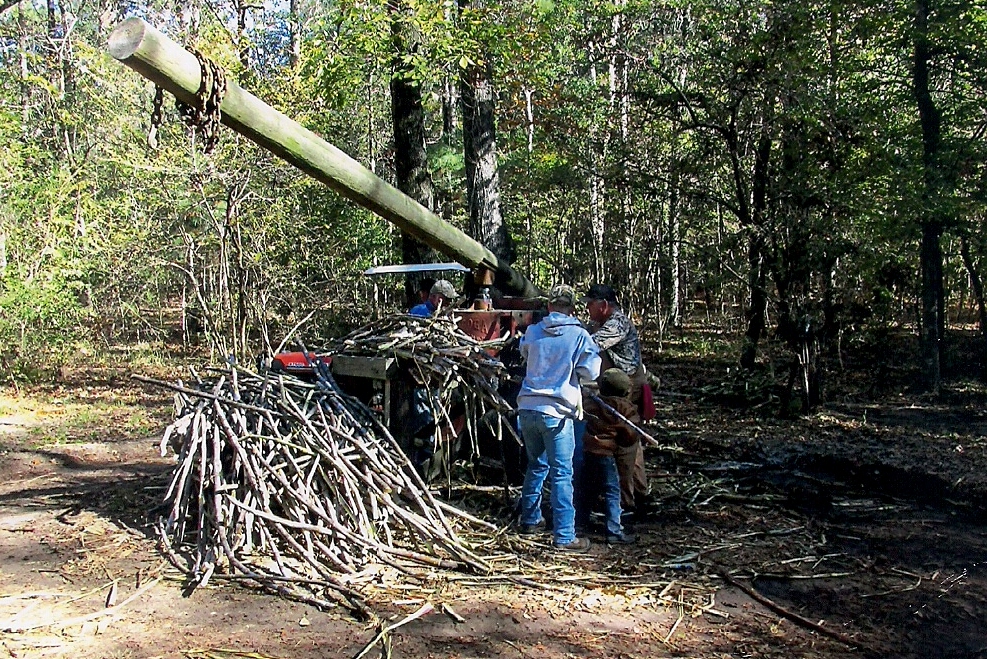
Feeding the sugar cane into the mill to be ground and squeezed to render out the sweet sugar cane juice. There is lots of hard work required to process the sugar cane. (Robertson Collection)
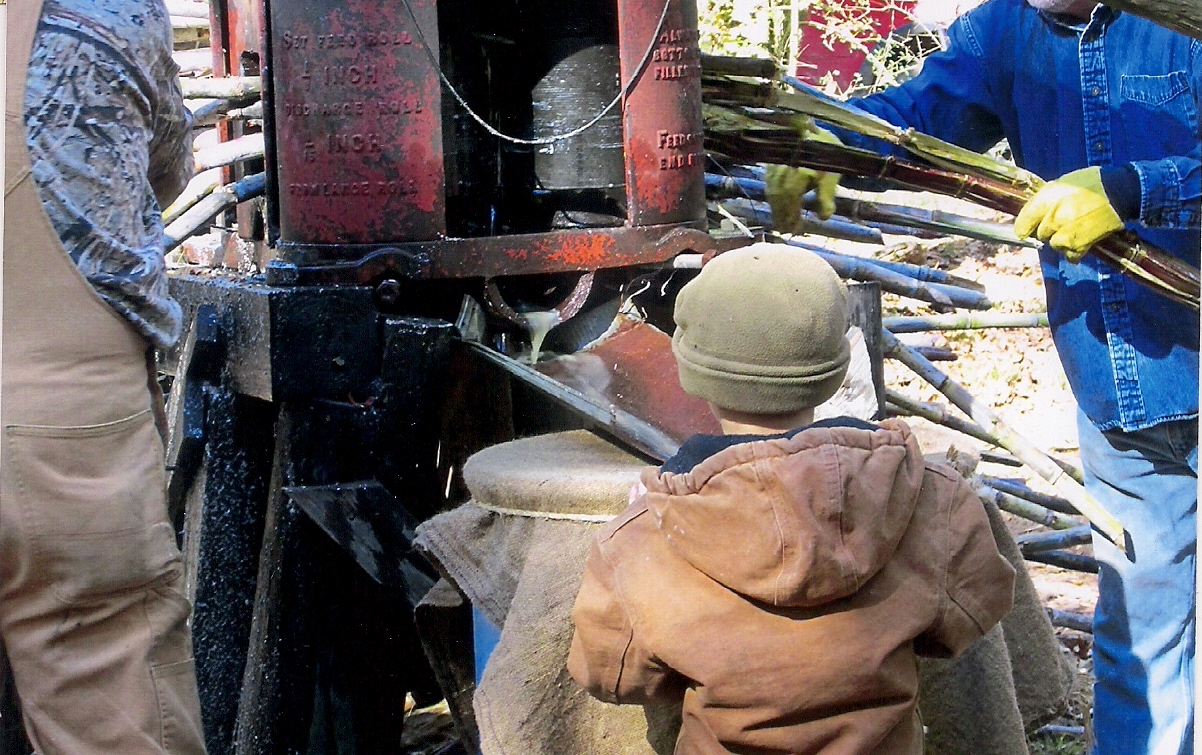
The children would sift and screen the sweet cane juice coming out of the syrup mill and going into the barrel to be processed. (Robertson Collection)
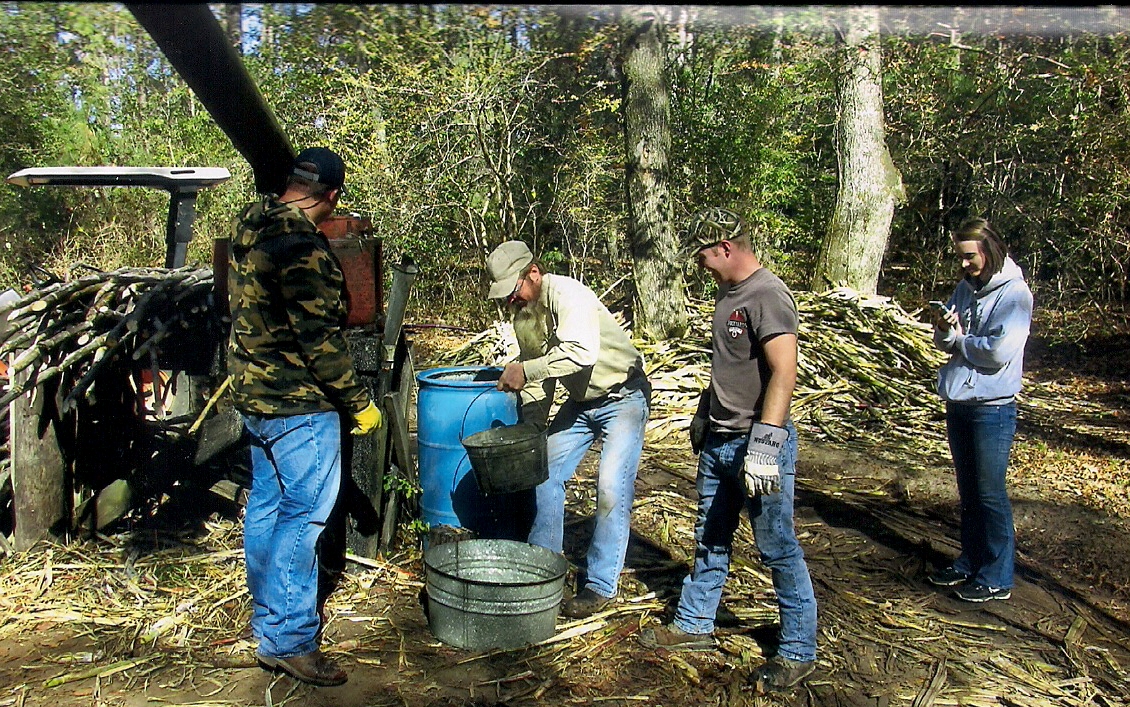
Pouring up the fresh cane syrup to be carried to the vat where it will eventually become syrup. (Robertson Collection)
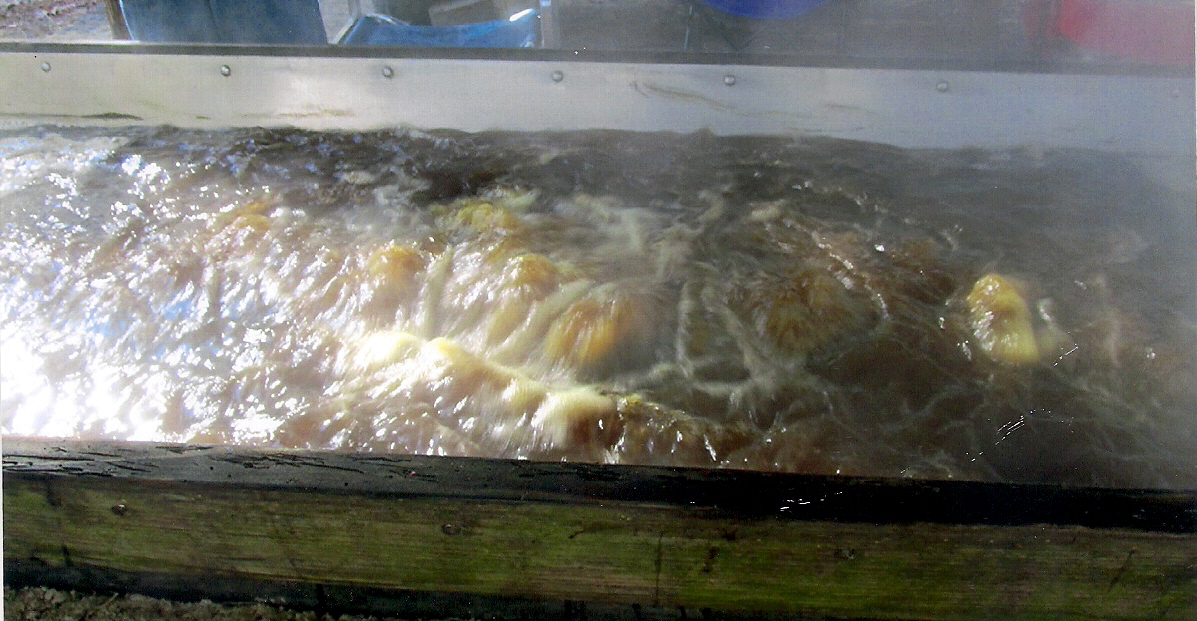
The cooking vat holds 110 gallons of sweet cane juice. The juice is brought to a boil for 7 hours before it becomes syrup. The juice in the vat is boiling at this time. (Robertson Collection)
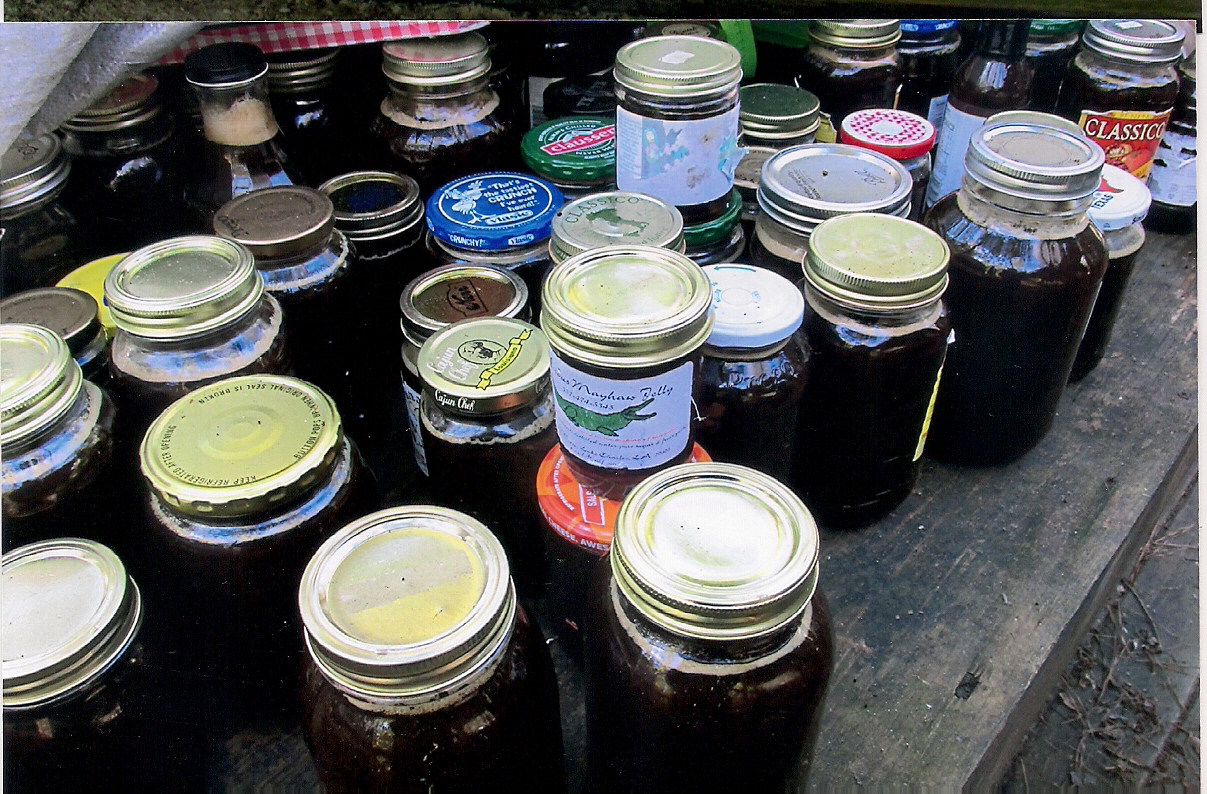
The finished product of fresh homemade cane syrup can be seen after it has been placed in various jars and containers. (Robertson Collection)